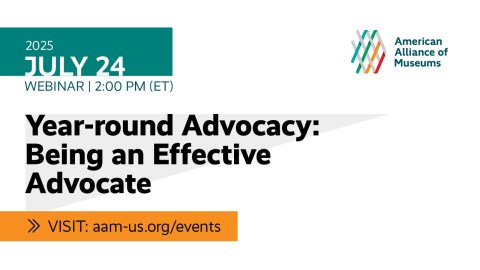Today’s post is by futurist Garry Golden, who frequently collaborates with me on CFM projects. Garry is co-author of Tomorrow in the Golden State: Museums and the Future of California, and is currently the lead instructor for the California Association of Museums with its Leaders of the Future program.
The creation of Third Places—those not home, not work public-private gathering places—is now widely embraced by institutional leaders, urban planners and elected officials as a way to design livable communities and welcoming civic institutions.
The mainstreaming of third places occurred in the 1990s as architects, urban designers and evangelists of reviving civic culture popularized the phrase to encourage investments in community places. Starbucks and Barnes & Noble built their fortunes and brands on the quality of place-based experiences and institutions such as the Rubin Museum (Friday night K2 Lounge) and Walker Art Center (Open Field) have created compelling placed-based experiences that exist outside their traditional exhibit halls. Now the model is spreading in ever more creative ways—for example, the Winnipeg Free Press set up a cafe to encourage the public to hang out and interact with its reporters.
Looking towards the future, third places are being re-shaped by a growing community of designers who merge principles of architecture, social ergonomics and technology-based experiences to reshape our relationships.
The Pull to Third Places: Mobile & M2M Communication
What are the trends we expect to converge around mobile users and location based services?
As you’ve heard, ‘the mobile Web is here’—but culture has been lagging and we are only at the beginning of seeing an advanced user culture that is more open to managing their identity on-the-go while indoors or outdoors.
Technology and telecommunication companies are now promoting a vision of ‘machine to machine’ (M2M) based communication platforms that allow devices to communicate with other devices and then relay information to the user. It is seen as a way to automate relevant information based on location and create a compelling ‘pull’ that attracts people to third places.
Imagine this pull scenario in 2015:
As Susie leaves work, she updates her status: “Looking to have a cup of coffee in an interesting place” and opens her geo-fence permissions to local businesses and institutions to make a connection. The local museum picks up the message via its Facebook and Twitter feeds, and notices that Susie’s friend John is only a short distance from the museum. The museum sends John a text message with a two-for-one espresso offer and John calls Susie to set up the date. Susie is thrilled—she hadn’t been to the museum in over two years! When John and Susie enter the museum a Google-map based indoor location service notifies the barista to prepare their drinks (per the preference settings in their social media profiles) and they are guided to an open table that overlooks the new exhibition. A live jazz trio plays quietly on an adjacent balcony as overhead speakers adjust volume based on John’s preferences stored on his phone. On the way out, Susie receives an open offer from the museum to return at a special discount admission price. Meanwhile John gets a second notification—another friend has just arrived at the museum, and they spend an hour together in the new exhibit before heading home.
In this scenario museum marketing and engagement department is connected across various social network and machine-to-machine (M2M) ecosystems—in order to send out digital beacons that pull their community members to the cafe.
Third Place: From Coffee to Sensory Explosion
The future of third place experiences will go far beyond good coffee and live music! Interaction designers are re-imagining place-based experiences around expanding ecosystem of technology interface such as:
- Gesture based experiences: How might your third place become associated with physical movement? Imagine a group of seniors using an application build upon Microsoft Kinect that allows them to “paint” digital copies of masterpieces from your museum. Or
- Audio and Sound-based experiences: Not everyone wants to mix art with music—perhaps your third place should have spaces for peace and quiet. Sound specialist company Silentium has demonstrated a chip that could effectively create a noise-free zone! (Think Get Smart’s “Cone of Silence.”)
- Projection Systems: your third place could have ceiling-based digital projectors that turn any surface into an interactive visual experience. Imagine your education team developing new ‘surface computing’ lessons that support your collections and exhibits.
- Wearable: your third place experience might be shaped by digitally enhanced textiles. Could you recreate textile collections and develop a reputation around touch-based third place experiences? Try this one!!! Might museum visitors receive wearable storytelling gloves for certain exhibits?
- Rapid Prototyping/Additive Manufacturing: museums’ third places may quickly become gathering spots for Maker Culture. (For example, the New York Hall of Science just unveiled their new Maker Space.) Leveraging low cost desktop rapid manufacturing devices, you could imagine your museum experience including real life replica of exhibit collections that ‘printed’ layer by layer onsite!
In this future, museums bring the high standards of user experience design now often reserved for exhibitions into the third places they create for their communities, becoming more convivial and welcoming. Third Places will continue to expand as a fixture of life in the modern world, as neutral gathering places for social interactions or as quiet escapes from the fast pace of life. Museums that build compelling third places will likely reap the rewards of healthy civic engagement and the creation of cultural commons that bring communities together.
Related posts
- CFM’s predictions on the museum of the future
- NPR’s story on Library hackerspaces
- Museums as Third Places
Recommended reading
- IMLS report on museums and libraries as third places
- The Great Good Place: Cafes, Coffee Shops, Bookstores, Bars, Hair Salons, and Other Hangouts at the Heart of a Community, by Ray Oldenburg
- Civilizing the Museum: The Collected Writings of Elaine Heumann Gurian
Also, you can access stories I have tagged as relating to ‘Third Place’ here.








